Teaching Kids Responsible Pet Care
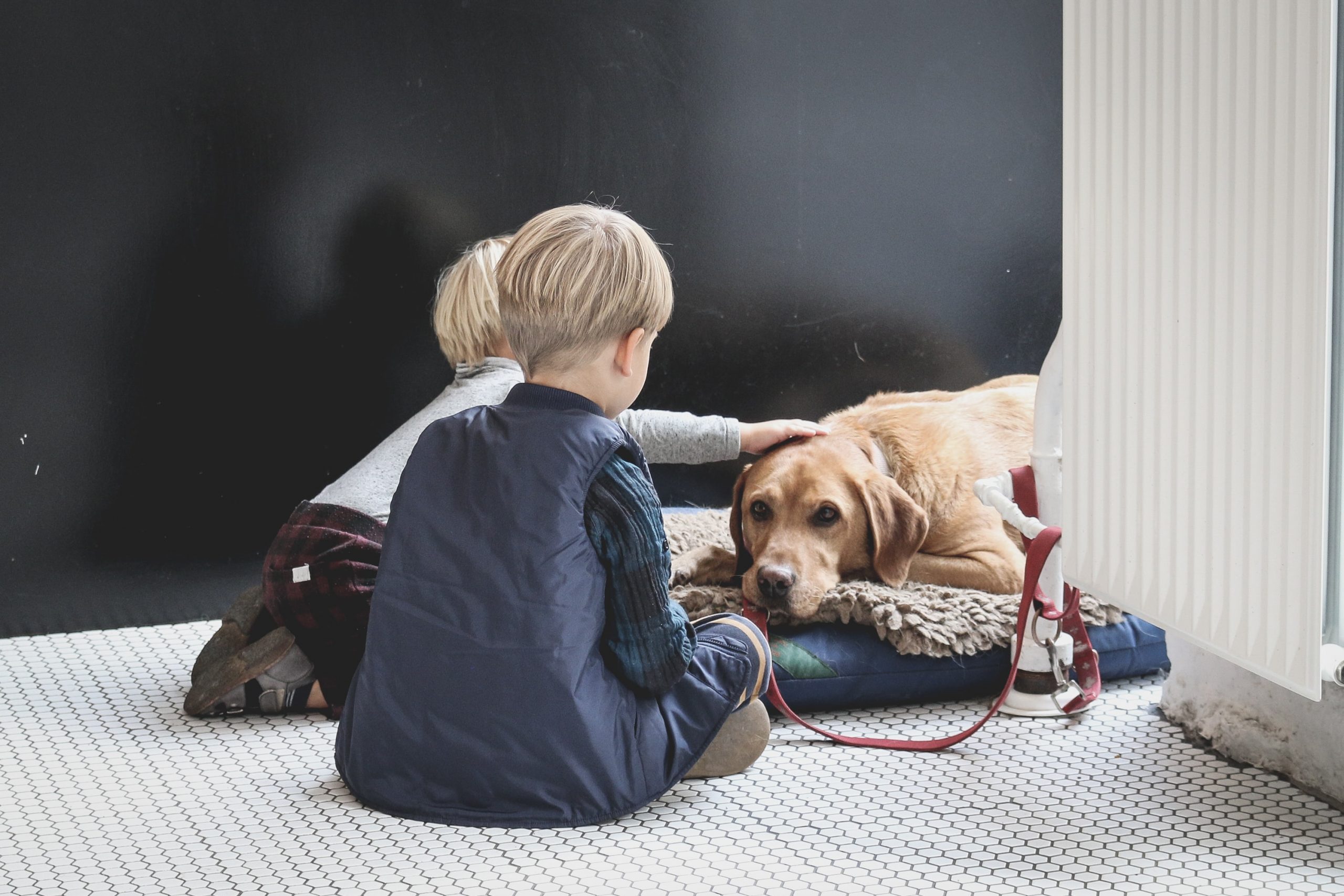
So, your child wants their own pet. We both know this means more work for you, the parent. There is not much that is more exciting to a child than the prospect of a new pet. The problem is, most of the time the excitement wears off and the responsibilities get tossed aside. So what do you do?
New pet rush and crash
I believe the best way to counteract the “new pet rush and crash” is to find ways to keep your child interested in their new companion. 4-H is a fantastic way to do just this. It’s an organization that provides a path for kids to interact with their pets while also learning about them. 4-H members spend time with their pets at home as well as in groups and at competitions. The new pet enjoyment doesn’t wear off because there is continued interaction within a group atmosphere.
4-H basics
4-H stands for “head” “heart” “hands” and “health”. When people think about 4-H they tend to think about farming, but it’s not just for kids living in rural areas anymore. There are several 4-H clubs that meet and are accessible to kids across America. They describe themselves as, “America’s largest youth development organization—empowering nearly six million young people with the skills to lead for a lifetime.”
Make it group-oriented
4-H teaches young people responsibility and leadership skills that last a lifetime. Members are encouraged to keep meticulous records, learn safe handling skills, anatomy, and have a strong knowledge of health and illnesses related to their pet. Being part of a group makes pet ownership even more fun and the competitive aspect of preparing your pet and yourself for a show gives children a leg up on test preparation later in life. Standing up in front of a crowd with your peers and answering questions from a judge will help kids learn public speaking skills. Children get more comfortable in uncomfortable situations by repetition. After several shows, they won’t think twice about the crowd.
Dreams do come true
The knowledge that I gained in 4-H helped me go from adopting pets to running a pet service business today. My ability to speak clearly, without fear in front of a crowd, my record keeping skills, the ability to read and retain information, and my knowledge of animals help me tremendously in my daily life as an adult. I use all of these skills daily as a small business owner and I credit my time in 4-H with giving me the courage and knowhow to graduate college, work in a public institution, and eventually start my own pet service business. Check out Petworks for all of your pet care needs. Find trusted pet sitters, dog trainers, and more!
Get going
Take your kids with you to make pet ownership a reality. Find a pet that fits well with your family’s lifestyle and is something your kids will be able to help care for. Then, find a group either online or in person to help your kids get past that new pet rush and crash. Have fun!
About the Author
 Jessica Hampton-Diamond is the co-founder and owner of Platinum Leash Pet Care Company located in Portland, Oregon. A mother of three and a pet parent, she writes about animals, people, parenting, and adoption.
Jessica Hampton-Diamond is the co-founder and owner of Platinum Leash Pet Care Company located in Portland, Oregon. A mother of three and a pet parent, she writes about animals, people, parenting, and adoption.
How to Start a Pet Care Business
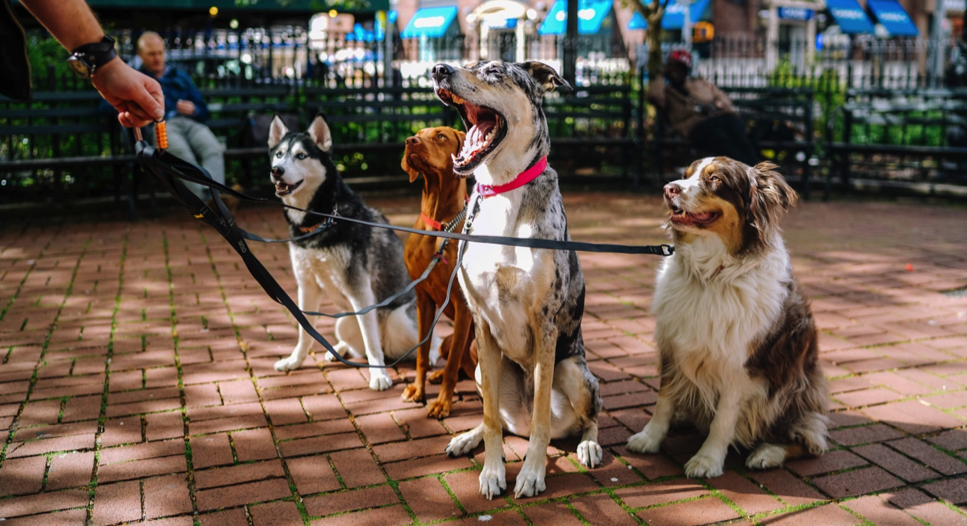
by Stephanie James, dog walker and freelance writer.
In recent years, pet care has become a booming business in the US and other parts of the world as well. The industry has many different categories. These categories include pet grooming, doggy daycare, dog obedience training, pet sitting services, pet nutrition consulting, among other pet-related services. Though this is a lucrative business, becoming a pet care pro is a task that needs patience, faith, and sacrifice, among other essential traits. There is more to being a pet care professional than just playing with the pets and taking them for a walk. Pet care is always physically demanding and often times challenging work. (more…)
Choosing a Good Dog For Young Kids in the Home
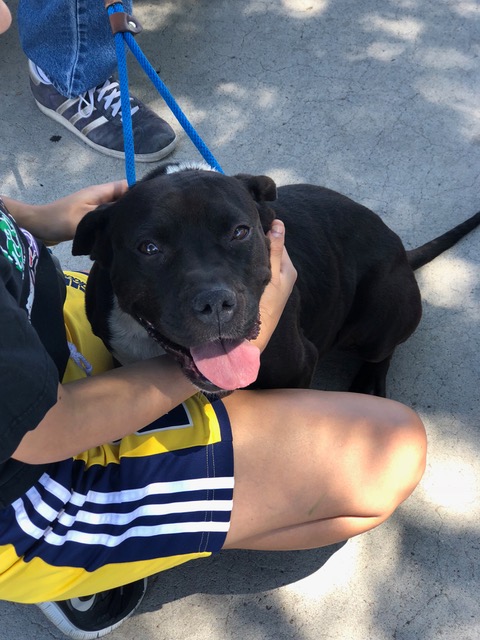
by Julie Hart, owner of Hart to Heart Canine Training and founder of RescueDogsResponsibly.com.
Adopting a dog is one of the few times we can choose a family member. When people think of having a dog, they usually have visions of walking, hiking, going to an outdoor café, and just hanging out with a best friend. They want their dog and children to best buddies. Unfortunately this doesn’t always happen. As a dog trainer, I speak with many clients that just adopted a dog that bit their child, guards their food bowl, or tore up their house due to anxiety. Choosing a dog is not simple anymore. There are many places to get a dog like dog rescues, breeders, shelters, and Craigslist. Some people trying to sell or adopt people a dog don’t have the buyer’s or adopter’s best interest at heart. The knowledge of dog rescue and shelter personnel varies, so I recommend adopters learn about how to choose a dog and decide for themselves. How does an average dog adopter sift through all the options and available dogs to find the match for them?
It all boils down to determining a dog’s genetic temperament and choosing the temperament that matches your family. A dog’s innate temperament is important because it is the foundation of the dog’s behavior and personality. The statement, “Its all how you raise them,” meaning that if you raise a dog with a good home, love, and some training, he will be a good family dog, is far from the truth. As a dog rescuer and dog foster mom (I wear two hats in the dog world), I have witnessed many, many dogs that suffered horrendous living conditions and abuse that are still wonderful friendly dogs. As a dog trainer, I know of dogs that had nothing but a loving home that are unstable, aggressive, or anxious. While a loving home with proper boundaries and training will provide a dog the best chance at being a nice dog, it does not guarantee it. A dog is a sentient, individual living creature born with its own DNA and genetics. Genetic innate temperament is the reason police and service dog breeding programs are so selective. Innate temperament is why we cannot take a Coonhound and make it herd sheep. (Well, maybe we could, but it would be very difficult.) When choosing your family dog, pay a lot of attention to the dog’s temperament it is born with, not its history, size, or appearance. Use logic and instinct to choose a dog instead of pure emotion, pity, or physical attraction. The cutest dog with blue eyes may not be the right temperament for your family.
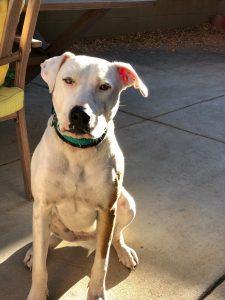 The temperament that makes a nice family dog is a dog that wants to be with people, is somewhat submissive, and has low prey drive without a high level of anxiety or fear. To find this kind of dog at an adoption event or a breeder’s location, start by observing from afar. Locate the dogs that are engaging with people with a low to medium height, wagging tail. A dog that is somewhat fearful or insecure should still have a desire to be with people to be easy to rehabilitate. A polite dog that is sitting or standing nicely while being petted is typically easier for an average pet guardian than a dog forcefully jumping off of people or wrapping its legs around a person. Forceful jumping or wrapping legs is more dominant behavior, although some dogs will lightly jump if they have been encouraged to do so by other people. One side note: do not give treats or food to dogs you are considering adopting as this will sway their interest in you and may create misleading results. A dog that comes up to you, sniffs and walks away, or jumps on you and walks away is usually a bit aloof and better for an adult home or more experienced dog owner. Aloof dogs are harder to train and care less about what their guardians want from them. Aloofness may be good in some situations if the dog is home alone a lot or someone desires a more independent dog.
The temperament that makes a nice family dog is a dog that wants to be with people, is somewhat submissive, and has low prey drive without a high level of anxiety or fear. To find this kind of dog at an adoption event or a breeder’s location, start by observing from afar. Locate the dogs that are engaging with people with a low to medium height, wagging tail. A dog that is somewhat fearful or insecure should still have a desire to be with people to be easy to rehabilitate. A polite dog that is sitting or standing nicely while being petted is typically easier for an average pet guardian than a dog forcefully jumping off of people or wrapping its legs around a person. Forceful jumping or wrapping legs is more dominant behavior, although some dogs will lightly jump if they have been encouraged to do so by other people. One side note: do not give treats or food to dogs you are considering adopting as this will sway their interest in you and may create misleading results. A dog that comes up to you, sniffs and walks away, or jumps on you and walks away is usually a bit aloof and better for an adult home or more experienced dog owner. Aloof dogs are harder to train and care less about what their guardians want from them. Aloofness may be good in some situations if the dog is home alone a lot or someone desires a more independent dog.
After spotting a nice friendly dog that wants to be with people, walk over to it and pet it. Pet the dog under the chin, not on top of the head. Pet the dog on his back a little. Stop petting and see if the dog hangs out with you for more affection. The dog walking over to another person for affection and being social with many people is also good sign. If the dog is not interested in you and walks away or avoids you by sniffing items, I would look at other dogs. For a home with children, the dog that is naturally polite with children is optimal. I don’t want the dog to immediately jump up, nip, or avoid the kids. Polite interest is best.
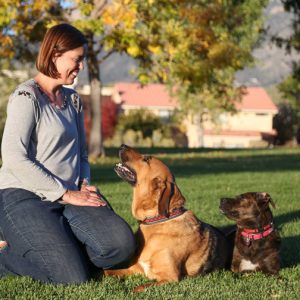 The next step is to assess how sensitive and accepting the dog is of touch. Touch the dog’s teeth, ears, feet, tail in a gentle, calm manner**. I want the dog to either accept this touch or lick my hand. I assess plenty of dogs that are in pain with bad hips and rotten teeth that will not snap at me for touching their hips or mouth, so pain is not an excuse to bite when doing this kind of touch. If the dog bites, growls, gives you a hard stare, or stiffens, move on to another dog if you have children. If you have young children you want a dog that will not bite when your child accidentally steps on his tail or falls on his leg. Dogs that are more sensitive to touch are better for adult homes that will be able to recognize a dog’s comfort level better. Next take the dog for a walk. Change directions a few times and see if the dog follows you somewhat. Precise leash walking is not important, just the desire to follow a person. If the adopter turns the opposite way the dog is going, the dog will somewhat follow them after a couple turns. The easier the dog follows you the easier it will be to train. Observe if the dog is scared of any environmental things such as other people, strollers, bicycles, flags, or loud noises. If the dog startles to a dropping clipboard or metal water bottle, then comes to sniff it and moves on, that is desirable. If the dog gets scared and walks away or only investigates the object with coaxing, this dog is less confident and will require some rehabilitation and patience to become more confident. A dog that cannot recover and remains stuck in fear or runs away and will not return is a case for skilled professionals to help before adoption. A fearful dog may not be a good match for small children as kids can be erratic and noisy at times. If the dog has a lot of energy, make sure you have enough time and energy to fulfill the dog’s needs. Runners, hikers, and active people are best for high-energy dogs.
The next step is to assess how sensitive and accepting the dog is of touch. Touch the dog’s teeth, ears, feet, tail in a gentle, calm manner**. I want the dog to either accept this touch or lick my hand. I assess plenty of dogs that are in pain with bad hips and rotten teeth that will not snap at me for touching their hips or mouth, so pain is not an excuse to bite when doing this kind of touch. If the dog bites, growls, gives you a hard stare, or stiffens, move on to another dog if you have children. If you have young children you want a dog that will not bite when your child accidentally steps on his tail or falls on his leg. Dogs that are more sensitive to touch are better for adult homes that will be able to recognize a dog’s comfort level better. Next take the dog for a walk. Change directions a few times and see if the dog follows you somewhat. Precise leash walking is not important, just the desire to follow a person. If the adopter turns the opposite way the dog is going, the dog will somewhat follow them after a couple turns. The easier the dog follows you the easier it will be to train. Observe if the dog is scared of any environmental things such as other people, strollers, bicycles, flags, or loud noises. If the dog startles to a dropping clipboard or metal water bottle, then comes to sniff it and moves on, that is desirable. If the dog gets scared and walks away or only investigates the object with coaxing, this dog is less confident and will require some rehabilitation and patience to become more confident. A dog that cannot recover and remains stuck in fear or runs away and will not return is a case for skilled professionals to help before adoption. A fearful dog may not be a good match for small children as kids can be erratic and noisy at times. If the dog has a lot of energy, make sure you have enough time and energy to fulfill the dog’s needs. Runners, hikers, and active people are best for high-energy dogs.
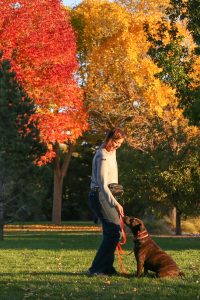 There are red flags to watch out for when adopting a dog. One is resource guarding, which is a dog that may growl or bite over toys and food. Resource guarding can be a serious problem and safety risk. Any dog put in a home with small children should be tested for resource guarding carefully. This is done by giving the dog a treat like a bone and approaching the dog**. A dog that stiffens, give a hard look, growls, bares teeth, or bites should not be placed with children, or most adults for that matter. Another red flag is outright aggressive behavior such as growling or biting. A dog with this behavior is going to be a difficult dog for the average adopter. A dog with fear to the point of being frozen, not liking people, or growling at people needs to be rehabilitated and trained before being adopted to the public. Another red flag is a rescue or breeder that makes excuses for the dog’s behavior. Dogs are amazingly resilient creatures. A dog that is outgoing and confident will not become overly scared or aggressive in a new situation. A stable dog will take only a few minutes to investigate and become comfortable in his new surroundings. A puppy hiding in the corner is a fearful puppy. A normal puppy will investigate a new place immediately. There are diamonds in the rough out there, but those dogs will require patience and they do show signs of liking people if ever so slightly. These dogs take time and can be extremely rewarding to help, but make sure you have the time and family to help that dog succeed.
There are red flags to watch out for when adopting a dog. One is resource guarding, which is a dog that may growl or bite over toys and food. Resource guarding can be a serious problem and safety risk. Any dog put in a home with small children should be tested for resource guarding carefully. This is done by giving the dog a treat like a bone and approaching the dog**. A dog that stiffens, give a hard look, growls, bares teeth, or bites should not be placed with children, or most adults for that matter. Another red flag is outright aggressive behavior such as growling or biting. A dog with this behavior is going to be a difficult dog for the average adopter. A dog with fear to the point of being frozen, not liking people, or growling at people needs to be rehabilitated and trained before being adopted to the public. Another red flag is a rescue or breeder that makes excuses for the dog’s behavior. Dogs are amazingly resilient creatures. A dog that is outgoing and confident will not become overly scared or aggressive in a new situation. A stable dog will take only a few minutes to investigate and become comfortable in his new surroundings. A puppy hiding in the corner is a fearful puppy. A normal puppy will investigate a new place immediately. There are diamonds in the rough out there, but those dogs will require patience and they do show signs of liking people if ever so slightly. These dogs take time and can be extremely rewarding to help, but make sure you have the time and family to help that dog succeed.
When looking for a dog, use the above recommendations and don’t be in a rush to choose a dog that will be in your house for over a decade. A good dog is worth the time he takes to find. For more details on the above recommendations, please visit www.rescuedogsresponsibly.com and the matching Facebook page Rescue Dogs Responsibly. These resources are free to the public to help them find an amazing pet. The website features videos of dog behavior and evaluations plus a flow chart to help adopters choose a dog.
**As always be very cautious and use good judgment when touching or evaluating dogs. Any interaction with animals can be inherently dangerous.
About the Author:
 Julie Hart is the founder of Hart to Heart Canine Training, offering in home, private consultations and dog training lessons. She is a Professional Member and Certified Dog Trainer of the International Association of Canine Professionals and a trainer on staff for a local rescue organization. She has presented twice at the International Association of Canine Professionals national conference. She received a scholarship to Training Cesar’s Way and gives classes for foster dog parents.
Julie Hart is the founder of Hart to Heart Canine Training, offering in home, private consultations and dog training lessons. She is a Professional Member and Certified Dog Trainer of the International Association of Canine Professionals and a trainer on staff for a local rescue organization. She has presented twice at the International Association of Canine Professionals national conference. She received a scholarship to Training Cesar’s Way and gives classes for foster dog parents.
5 Reasons Why Using Food Is A Problem In Dog Training
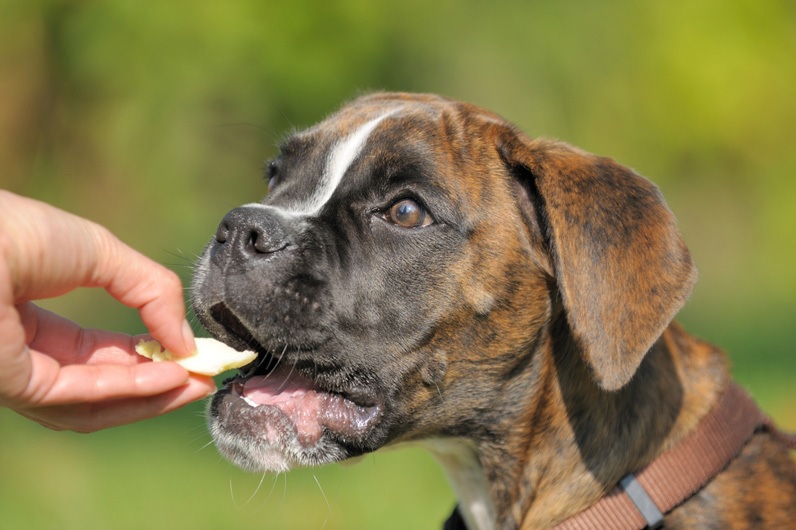
As a pet dog owner, the idea of reward-based training is likely very appealing to you – after all, you love your dog and want her to be happy! When we see a dog with laser focus and attentiveness to her handler, it looks awesome, right? She takes her treat eagerly and may even offer other behaviors in the hopes of keeping the game going. What could possibly be wrong with a training system that does that? (more…)
Dogs in Weddings
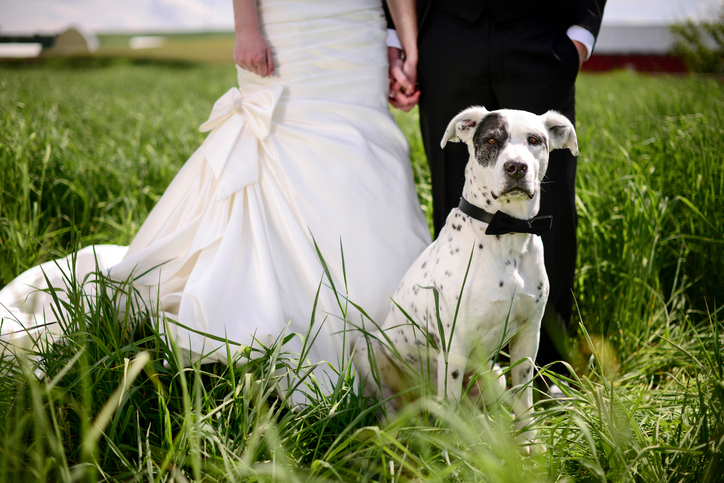
Your forever day is coming, and it seems like everything is coming together perfectly. The dress is fitted, the venue is chosen, and the photographer has taken the engagement photos, but then suddenly you feel like something is missing. As you sit there tapping your leg trying to figure out what is wrong, your faithful friend walks up and puts his head in your lap and looks up at you with “those” eyes. That’s it! You forgot to include your trusted companion in your big day. Oh no! (more…)

